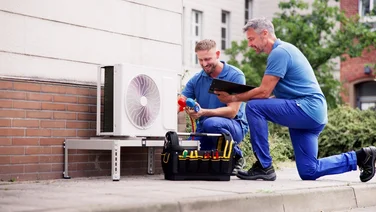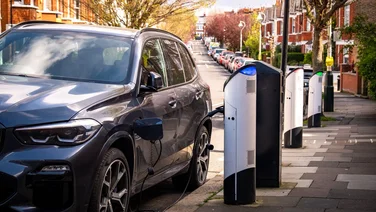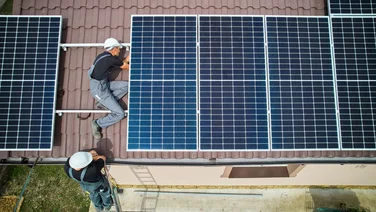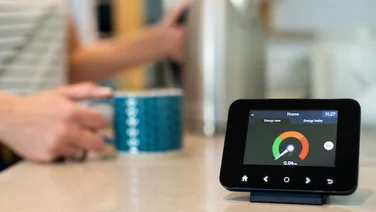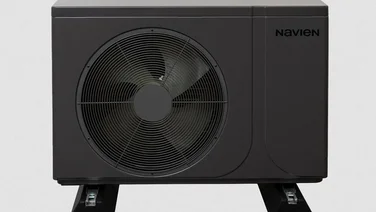Buying a new home is a mammoth task. And for many soon-to-be homeowners, eco-friendly credentials are now yet another factor to consider when looking at properties.
Does the property come with solar panels? How much energy does this building pump out each year? Are there any landscaping features that help local wildlife? The toilet system wastes how much water? These are all valid questions that eco-friendly homeowners are grappling with.
If this sounds familiar, rather than buying a bog-standard house and installing a range of eco-friendly measures, you can save time by trying to find a home with these features already in place.
And, since eco-friendliness and cheaper bills go hand in hand, this will benefit you in more than one way.
Whats on this page?
1. Solar panels
Instead of investing in a new set of solar panels, having them installed, and making sure you have all the additional bits and pieces, wouldnt it be easier if they were already fitted for you?
Solar panels can reduce your energy bills by up to 50%, but some people are discouraged from getting them because of the initial price. However, bear in mind that solar panel costs are decreasing dramatically. And if you buy a house with panels already fitted, you can swiftly avoid forking out a lot of money.
Plus, buying a house with panels already propped up on the roof means you can avoid pricey installation fees, which can climb into the thousands.
Not only will you save money, youll also save a lot of time.
But dont settle for any old house with solar panels. Make sure to check:
- The angles of the panels Technically, you can put solar panels on a flat roof, but they wont produce as much energy and might lead to more issues over the years. To get the most out of your panels, they should be mounted at a 20-50 degree angle to absorb as much sunlight as possible
- The make and model efficiency The more efficient the panel, the more light it can absorb. The majority of residential solar panels have an efficiency of 15-18%, although premium models can reach over 21%
- The age of the panels Like our fellow humans, solar panels become less efficient as time goes on. And since the previous owners are moving out effectively parting ways with their panels theyre likely to feel less likely to upgrade them
2. Good home insulation
You want to make sure your future house can not only produce clean energy, but also lock in all that heat efficiently. Not only will this help keep your emissions down, itll also keep you toasty during the winter, and will reduce your energy bills.
Home insulation comes in all shapes and sizes. Theres wall insulation, loft insulation, floor insulation theres even pipe insulation, which ensures that water stays hot as it travels through the pipes in a house.
But, when buying a house, what sort of things should you check to suss out how efficient the current insulation is?
- Double glazed windows Windows are responsible for roughly 25%30% of residential heating and cooling. Before you invest in a property, check the energy rating of the current windows, how old they are, and what type of glass they have is it single, double, or triple glazed?
- Loft and wall insulation As well as retaining heat, loft insulation could also save you £250 per year and cut your annual CO2 emissions by more than a tonne. As well as checking if the property actually has loft insulation, its worth noting what type of insulation material is used, since some are more effective than others
- Conservatory insulation If youre considering having this extra space, look into the propertys existing conservatory insulation. Ask whether the windows are double glazed, see whether there are ceiling panels that lock in heat, and check how old it is (as conservatories get older, they become far less efficient)
- Draughts Find out whether the house needs draught-proofing. This is by far the cheapest insulation problem to overcome, but its important to check before you move in. Common draughty locations include letterboxes, cracks between windows and doors, extractor fans, chimneys, and old floorboards
The government’s Future Homes Standard is set to come into play in 2025, and will have a keen focus on insulating homes more thoroughly. So, hopefully it won’t be as much of a challenge to find an eco-friendly home in the UK!
Just as important as good insulation is good ventilation. Passive ventilation is an eco-friendly way to keep air moving throughout the home.
3. Eco-friendly garden features
If your future property has a garden, you can do a lot to cut emissions no matter how small or large the space is.
Food waste is responsible for 3.1 billion tonnes of CO2e per year. So, if youre lucky, you can find a property that already has a suitable setting to grow your own fruit and vegetables, and cut back on your food emissions.
You might also come across properties that have eco-friendly landscaping to help reduce energy, cut back on water usage, and look after local wildlife.
Whats more, some of these facilities, such as an integrated watering system, a built-in composting system, or a water-recycling system can be passed on to future homeowners.
Some features are easy to fix too. If a property has an artificial lawn in the garden, removing it isn’t too complicated then it’s just a matter of replanting.
4. A good EPC rating
In short, an Energy Performance Certificate (EPC) is a review of a homes energy efficiency, and is a telltale sign of how eco-friendly the property is.
The scale ranges from A to G A being the most efficient, and G the least to show buyers how well the house can secure heat.
A houses EPC rating will depend on the amount of energy used per m², as well as the level of carbon dioxide emissions (in tonnes per year).
Apart from listed buildings, every house needs to have a valid EPC before it can be sold. The house seller or landlord is obligated to provide a valid EPC, and the buyers shouldnt have to pay anything to secure it.
Buyers should also consider a homes potential rating, which is shown alongside its current energy efficiency rating. The potential rating indicates how efficient the house can be if the suggested improvements are installed.
5. Council waste collections
Of course, eco-friendliness doesnt just come down to energy efficiency there are other ways homeowners can look after the planet.
Before moving into a new property, its worth looking into which council waste collections will be available to you.
UK waste collections include food waste, garden waste, recycling, and general waste however, to make things confusing, the rules vary throughout the country, with no two counties sharing the same set of rules.
Want to learn more about local waste collections around the UK? Check out our comprehensive guide to rubbish recycling.
6. Smart technology
For the average home in the UK, smart technology can reduce energy usage by 30%, which would lead to an annual saving of more than £450, according to data from Ofgem and Water.org.uk.
What exactly is a smart home? Essentially, its an interconnected network that allows you to remotely control devices around your property, using WiFi or Bluetooth to form connections between smart items.
If youre looking for a home that will help you reduce your emissions, keep an eye out for the following smart devices.
Smart thermostat
A smart thermostat can save you as much as £154 per year.
These work exactly like regular thermostats, except theyre also connected to WiFi. So, whenever you tell your smart thermostat to change the temperature whether through an app, hub, or speaker it communicates that command to the thermostat through your WiFi network.
Smart lighting
Smart light switches let you operate your homes lighting via a mobile app, from your phone or tablet, and can cost anywhere from £20 to more than £60.
In most cases, smart light switches will also let you dim your bulbs, and change the colour of your lighting to reflect your mood, or the time of day.
Smart plugs
Smart plugs are devices that plug into your homes sockets, allowing you to equip your other dumb devices with smart capability.
This means that no matter what device you plug in, youll be able to control it remotely, through your smartphone or tablet. You can also see what devices are on or off in your home, without even having to be there.
7. Eco-friendly water systems
Many people forget about the carbon footprint of water around their homes, but when it comes to cutting back on water usage, little changes can go a long way. In fact, if every household in the UK took just one minute off their shower every day, it would collectively save £215 million in energy bills each year.
Thats why its a great idea to consider whether your new house has water-saving features. These can be as small as low-flow toilets or a water meter, or as big as solar-powered water heating systems.
When looking at properties, pay close attention to the toilet, since flushing accounts for about a third of household water usage.
If your new house has a dual flush toilet, which gives you the option of how much water to use with each flush, then you can use about 4-6 litres of water with each flush, rather than the usual 13 litres.
You should also check for leaky loos which have the potential to waste between 200-400 litres of water per day. If left untreated, this could amount to 72,000-146,000 litres of water wasted every year or 483 full bathtubs worth.
Summary
There are lots of things to consider when buying a home, and eco-friendliness is starting to become more of a priority. Of course, once you move into your new home, you can add more features that help the planet yourself, but its nice to have a head-start.
In the meantime, if youre looking for more ways to reduce your carbon footprint, check out some of our articles on how to save water at home, how to grow your own vegetables, and how to save on energy bills.

